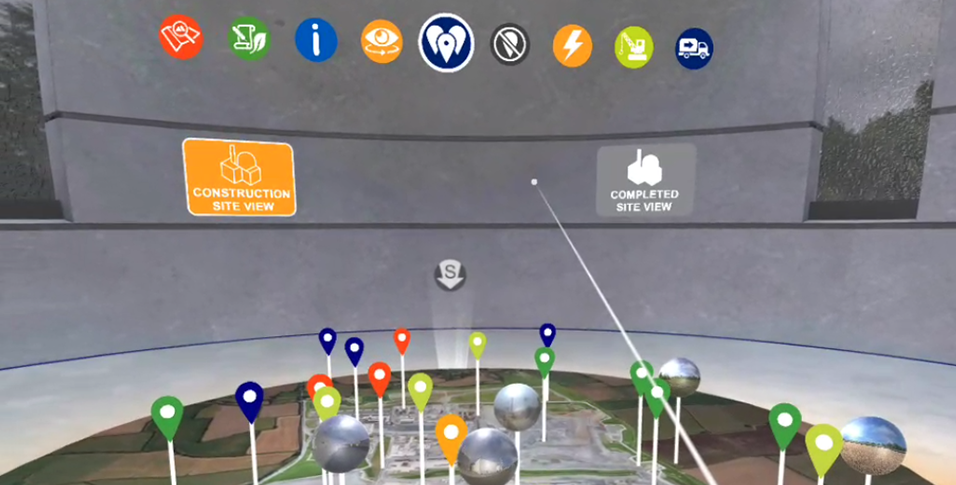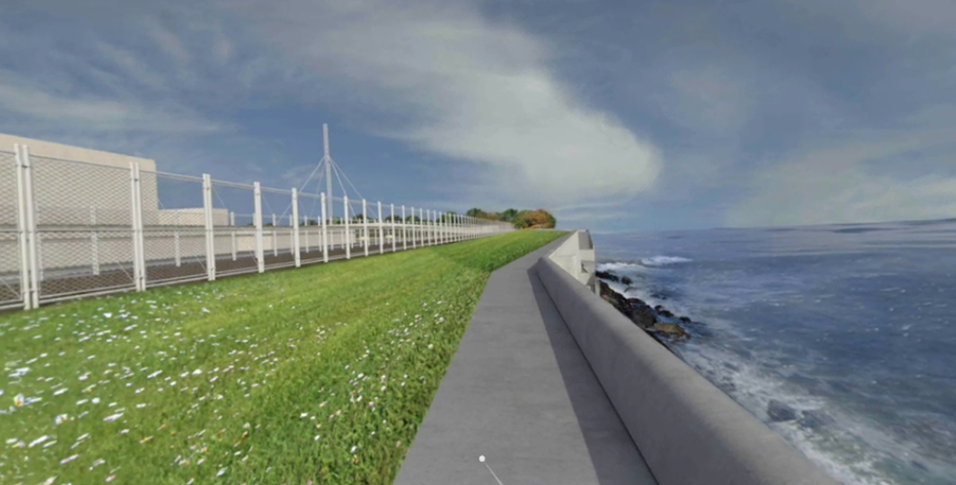The HPC team at EDF Energy wanted to create a navigational aid for official partners and visitors to the construction site, initially to correlate real world markers to information about and around final intended development outcomes, then as part of a wider deployment within visitor centres
An average construction site is always evolving environment, that also provides a set of dangers and constraints in regards to information, signage and access by authorised personnel only. A nuclear power station construction site understandably ramps up the restrictions and sensitivity of information available to access.
The initial deployment was on 20 Android tablets for official partners visiting the site, enabling to discover more about the final construction locations from the safety of the vehicle touring the site. GPS enabled visitors to track their position on the site, which at the time was fairly indistinguishable due to the early nature of construction, and correlate real world numbered and lettered markers to information points on their digital aerial map guide.
x20 Samsung Galaxy S2 tablets were provided to utilise the GPS positioning within the device for onsite location correlation.
The app was adapted with minor amends (removal of GPS positioning) to be installed onto a 70” touchscreen Android TV within the EDF Energy Visitors Centre. This was then ported to HTML5 and hosted online on the EDF Energy website.
Brightcove was chosen to host the online 360° videos since the player was compatible with Mac, PC and Android and iOS tablet browsers, whereas standard YouTube options are not.
A final version was then adapted into a mobile VR environment, allowing users to gaze down onto the aerial terrain relief model, with additional information points including 360° video filmed onsite blended into a construction-completed 3D CGI render.
Accuracy of the GPS positioning without a mobile network sim card was tested with a local area map of Brighton before being updated to reflect the real world location of the HPC construction site. The tablet and touchscreen TV apps were tested with Visitor Centre staff, many of whom are older volunteers or non-tech savvy, for each of use and operation.
As the application has evolved over time from the initial requirement to the current deployment across four platforms, the original codebase has been refactored to allow ease and speed of regular content updates for new information points to be added, media to be updated over time (it is a live construction site) or device support additions, without having to duplicate efforts across each device app build.
The initial tablet application was developed for a specific event involving a group of commercially orientated visitors to the HPC site, which was successful in engaging and enabling involvement moving forwards.
The resulting Android touchscreen TV, HTML5 and Oculus (now Meta) Go VR versions of the iMap experience have continued to be updated twice-annually with wide user engagement in the HPC Information and Innovation Centre and the Visitors Centre in and around Bridgwater, and online via the content embedded into the main EDF Energy HPC website.



We’re always happy to talk to you about how immersive technologies can engage your employees and customers. If you have a learning objective in mind, or simply want to know more about emerging technologies like VR, AR, or AI, send us a message and we’ll get back to you as soon as we can.